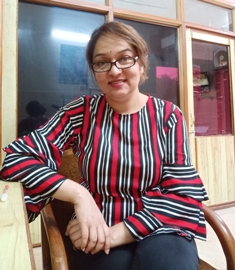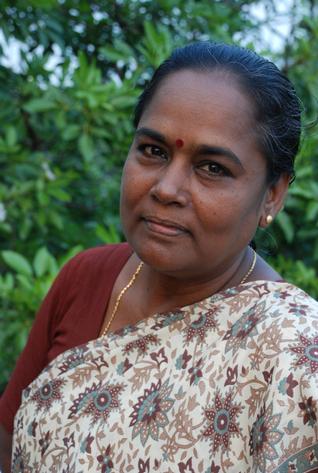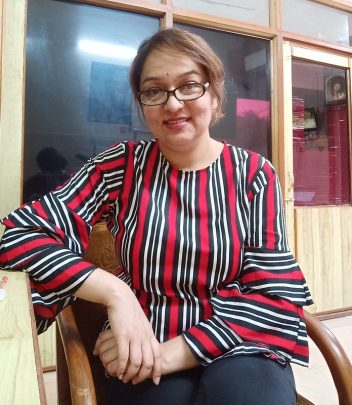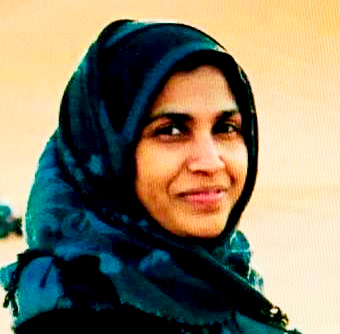Dr Amritpal Kaur
Caste is a notion, as Babasaheb said but what makes it a complex phenomenon to understand is the fact that it is also a notional reality. Caste is never singular, it is a plural social mechanism. There is no such thing as a caste. There are always castes that constitute the infamous oppressive social system of Indian society, the caste system. The caste system is the best example of how a belief can be changed into an institutionalised belief system by making it sacred through self regulating code.
The caste system is an enclosed class system which divides these enclosed classes into watertight compartments leaving zero scope for social and cultural endosmosis. This results in perpetually disadvantaged groups that not only are denied dignity and self respect but also access to basic human resources, jobs and education.
The evolution of the caste system from the class system has been a political process that involved politicization of religion, caste and religious justification of politics from time to time. Most of the scholars have intellectualized the caste system by excessively concentrating on these three factors:
1. Ritual purity
2. Material constraints
3. Power equations.
Power equations and material deprivation are a means to keep an unquestionable control of the upper castes over the lower castes so that they remain vulnerable on the path of daily survival and thus are not able to retaliate.
Ritual purity has also been explained as the only dimension of purity pollution concept where the untouchables and all women (being impure) are excluded from the ritual processions as their presence (touch and shadow) nullifies the ritual purity related with the caste purity. There is a two dimensional reality to the concept of caste purity, one is ritual purity and other is blood purity. Surprisingly, all women are excluded from ritual ceremonies but ritualization of religious culture (traditions, customs) is incomplete without their unconscious participation. They are considered impure to participate in rituals but considered pure only if they abide by all the rituals prescribed to them.
Thus, ritual purity cannot be seen as a mere exclusion of women from rituals but as a more inclusive involvement of women in maintaining caste hierarchy. Absence of women in rituals is related with their being born impure as women but making sure that their vaginas remain pure/ untouched/ unpenetrated before marriage (with a fear that the man might belong to a different caste) is the only means to ensure the purity of the blood of caste or clarity of the male lineage.
So, to maintain the purity of caste, it’s ritual purity is ensured and to maintain the purity of blood of the caste, purity of vagina is sought.
The subjugation of women in almost all societies is a universal phenomenon known as patriarchy. But in Indian society, patriarchy and caste system have religious interconnectedness. Just as the caste system is hierarchical, patriarchy is also graded. In the Indian context, patriarchy can be understood in three correlations:-
1. Family structure and households
2. Kinship and caste
3. Culture and religion.
It can be evaluated by how economic power of men and their domination of production was crucially linked to and determined by organisation of the family and household. The household has emerged as an important constituent of both production and patriarchy. Alongwith household, kinship i.e family ties or blood relation networks are central to both, the exercise of male power in the familial and social context as well as women’s status or lack of it at home and outside.
Both labour and reproduction involves exploitation of human labour (Dalit men and all women which includes the domestic labour of upper caste women and domestic and economic labour of dalit women) on one hand and female reproductive capacity on the other hand. The caste system is central to both forms of exploitation and further adds the concept of ritualizing female sexuality i.e her sexual prowess and procreative power. The religious patriarchy i.e the brahmanical patriarchy fixes upper caste women in purity and Dalit women in pollution. Both, the purity of savarna women and pollution of dalit women’s sexuality (at the will of upper caste men) are a means to keep the caste hierarchies intact.
Indian society is largely composed of hierarchical systems within families and communities. Patriarchy is one of them. Patriarchy in a non hierarchical society is different from the one existing in a hierarchical society. In a graded society it also becomes graded. Multi hierarchies produce a multicultural society in the form of local hierarchies (jatis). A jati is an endogamous unit with discrete cultural identity and a fixed occupation kept alive through endogamous marriage practices. Local hierarchies produce local patriarchal practices which contribute to diverse cultural practices in Indian society in the form of dresses, food, linguistics, art, music, etc. The common Indian rhetoric ‘Unity in Diversity’ thus becomes unity in maintaining this diversity.
The relational patriarchies between women within one family are a more adverse and continuous source in maintaining the caste (local) hierarchy. Here, women are pitted against one another and not all women are powerless all the time. Their position in the family, community and social hierarchy holds a special position in determining their susceptibility to sexual exploitation.
Women do not have any identity of their own. They derive their identities (in families and society) through the identity of the men they are related to. Local and relational patriarchies forever keep the identities of women submerged in the quagmire of religious culture and thus creating a deep hostility among women. The various lived experiences that women in different patriarchal locations defined by multi hierarchies face, have no means of a uniform reddressal.
The most widened gap of subjugation of patriarchal realities can be observed between savarna and Dalit women. The humiliation of a Dalit women is public while that of a savarna woman is mostly private. It’s very rare that we hear upper caste women being dragged to fields by the lower caste men to teach their community a lesson, or are being stripped and paraded naked or hot oil being poured over them. The caste based sexual atrocities are a hard hitting reality in Indian society where the motive of sexual harassment of a Dalit girl is not only limited to sexual gratification but it is also a political tool used to display the power of not only a male ego but also of a false pride of being upper caste. Such atrocities have a clear message that an upper caste male is the most powerful in the Indian graded scheme of multi hierarchies being both a male and an upper caste whereas a Dalit women being at the lowest level of this schematic ladder is the most marginalised and vulnerable being both a Dalit and a woman.
Rape of a Dalit woman is not a crime, it is an atrocity that also involves a cruel and shocking element of physical violence in order to teach the whole community a lesson for breaching the laws of Brahmanical order. It’s very rare that we as a society admit to caste based sexual atrocities on Dalit women where the caste of a woman rather than their gender becomes the main element of the violating act. When Dalit women rights are violated they don’t arouse the same reaction as seen in the case of violations of upper caste women. There is a complete lack of cooperation by the administration , the police, medical establishment, local media and political parties. This culture of impunity and an absolute social silence in caste based gender violence has been deeply rooted and too normalized to be recognised as a tool to retain dominance of the upper castes.
Religion has sanctioned the sexual abuse of Dalit women as they are considered to be dirty and polluted , without any self-respect and autonomy. Jokes on their bodies are systemic and not born out of vacuum. Rape of a Dalit girl is considered to be coming of age normal for the upper caste boys. The social climate in villages is deeply casteist and patriarchal. Caste can be seen in its most naked form in the villages and because of the feudal power structure, caste and caste based sexual atrocities are generally brushed under the carpet. In the villages we actually get to see the real inter-connection of caste, patriarchy, political power, economic power and state machinery and how this chain of power lies in the hands of the upper castes who can use it at their will to shape the destiny of the victim.
Multi hierarchies in the Indian society can be broken down into age, sex, ordinal position (designation according to number), kinship relationships, caste, lineage, wealth, occupations and relationships to ruling power (within the community). Factors like kinship, labour, sexuality, access to material resources and caste as a product of endogamous marriages have over the time moulded the relationship between gender and caste.
The common binding factor of multi hierarchies including caste system is a sustained endogamous marriage practice. Babasaheb, in castes in India explains how brahmanical patriarchy was working in past through three uxorial (relating to wife) customs namely, sati, enforced widowhood and child marriage. These customs were the means to sustain endogamy by curbing all choices of women. Although these customs are rarely practiced today, Endogamy still persists and hence the caste system. Today, the quality of a woman i.e virginity and sexual prowess and procreative powers are ritualized so that these can be legitimately used to maintain the purity, continuity and immortality of the male vansha.
The cultural conflict between excessive stress on a woman’s virginity before marriage and modernisation has resulted in sudden upsurge in cases of hymenoplasty i.e a minor surgical procedure where hymen (a membrane covering the entrance or opening of a woman’s vagina, the presence or absence of which determines the status of her virginity) is repaired or reconstructed. This helps to maintain the notion of virginity of a woman and thus purity of her father’s caste.
To become a caste, a class has to enclose itself from other classes and to keep itself culturally different it has to perform strict rules of endogamy. In order to keep endogamy functioning smoothly, there has to be a fixed mechanism through which any attempt of escaping endogamy is dealt with strictly. This mechanism is known as exogamy. According to Babasaheb, the marriages in Indian society are based on the laws of exogamy and not on endogamy. All exogamous unions are dealt with more severely (honour killings) as compared to breaching endogamy (inter caste or inter religious) so that endogamy can run smoothly. The smooth running of endogamous unions is the basis for caste maintenance.
In Indian society, the parental (ancestral to be more precise) attributes are more important than individual ones and elders decide who their children are not supposed to marry. The laws of exogamy include two main rules, the Sagotras and the Sapindas. Sagotras are the members belonging to the same gotra or ancestor whereas Sapindas include members belonging to a fixed number of generations (five paternal and three maternal). People belonging to the same gotra and fixed generations are considered to share common ancestors. Therefore their unions are prohibited. All these relations form the kinship unit also called the exogamous unit. Every endogamous unit has its exogamous unit who is always ready to instill violence on any breach of the law. Breaching of exogamy disturbs the clarity of the male vansha and if the male vansha becomes unclear the continuity of endogamy is disrupted. For e.g, if a daughter is born through an exogamous union, her relation with her parents is completely altered. Her mother also becomes her maternal aunt and her father becomes her paternal uncle.
Hence, the Indian marriage system must be endogamous but based on the laws of exogamy so that the clarity, purity and continuity of the male vansha or lineage must be maintained. This is ensured by taking away all the choices from women, especially their right to choose their life (sexual) partner. Any defiance or breach of this system is punished by instilling sexual atrocities on all women. They are subjected to all kinds of oppression – economic, social, cultural, educational, sexual, emotional, legal as well as political, and so they are left with no weapon to retaliate. Women in our marriages are mere receptacles and transmitters as objects. They have no vansha or identity of their own.
The upper caste male has the maximum power in the caste hierarchy for being both an upper caste and a male. Brahmanical patriarchy provides unlimited power (religious) to him to instill vaginal violence on all women whenever there is a challenge to his status quo.
The purity pollution dimension of the caste system demands a thorough re-examination by keeping pure and impure status of vaginas of upper caste and Dalit women respectively, at the nucleus of all explanations of caste.
Babasaheb believed that inter caste marriages or mixing of blood is the only way to annihilate the caste system. Despite rapid urbanisation and proliferation of nuclear families, caste/community based marriages remain prevalent. Increase in educational levels correlates to a decrease in endogamous marriages, but in India educational level of individuals appears to have no bearing on the likelihood of marrying someone from a different caste.
Subjugation of women is central to the reproduction and sustenance of the caste system and emancipation of women, especially women at the bottom of the caste hierarchy is crucial to any struggle against caste. In India one cannot fight for women’s liberation unless one challenges brahmanical domination and caste hierarchy and brahmanical patriarchy as a means for this domination. It is essential to know why and how brahmanical patriarchy allows upper caste men to lock up their women while enjoying easy and unlimited access to the lowest women in hierarchy. It is important to realise the centrality of caste to the operation of gender inequality in Indian society.
Babasaheb was of the opinion that it is equally important to frame a code (Hindu code bill) for laws of marriage, adoption, divorce and inheritance based on equality among castes and between men and women just as it was important to frame a constitution based on equality of citizenship.
Dalit liberation movement would intrinsically remain incomplete without liberation of their women from the clutches of Brahmanical as well as Dalit patriarchy. Caste cannot be annihilated unless there is a sexual revolution. A sexual revolution cannot occur without political and ideological revolution. Politically we need to demand for a quota within the quota system of women representation in the parliament in order to break the savaranisation of women’s politics. Self representation in the parliament will ensure a fair and equal representation of Indian women who do not form a homogeneous group owing to the multi hierarchies.
Ideological revolution requires a redefining of caste from a woman’s perspective by breaking the pen-penis friendship that has successfully erased the location of women in maintaining the caste system. It’s important that we explain caste in our way, a more inclusive way, the way we experience caste through our vaginas.
~
References
1. Castes in India (Dr Babasaheb Ambedkar writings and speeches vol 1)
2. Gendering Caste by Uma Chakravarti
3. Creation of patriarchy by Gerda Lerner
~~~
Dr Amritpal Kaur is an Oral and Dental surgeon (BDS) from Jalandhar, Punjab.She has been a private practioner since 13 years. She is a writer (Ambedkarism, Buddhism and Feminism), a Social Thinker and the founding member at National Council of Women Leaders.










